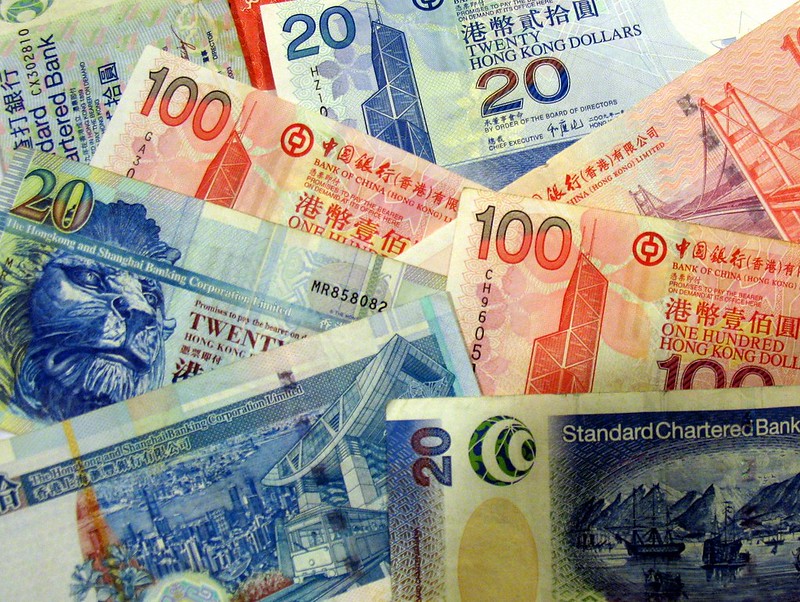Investors in solar panel glassmaker Xinyi Solar can't put a foot wrong at the moment, according to the company's full-year results for 2021.
While the board pursued an expansionist approach which has reaped bountiful returns from the company's glassmaking and solar project development units – and is preparing to enter the profitable polysilicon manufacturing game – the rising input costs and falling price of the glass used in PV modules last year caused less of a headache than expected thanks to international currency movements.
Unveiling a set of figures this morning which amounted to a shareholder net profit of HK$4.92 billion (US$630 million), the Chinese glassmaker said appreciation of the renminbi currency and Malaysian ringgit against the Hong Kong dollar last year “fully offset the impact of the decrease in average selling price” for solar panel glass.
Input costs
Those higher input costs for the manufacturer amounted to Xinyi's raw materials bill almost doubling, from HK$4.8 billion (US$615 million) in a bumper 2020 to HK$8.12 billion (US$1.04 billion) last year. Throw in transport costs, including “container shortages and port congestion,” which rose from HK$290 million (US$37.1 million) to HK$493 million, year on year, and investors were told the manufacturer expects some of its peers to pause or abandon production capacity expansion plans.
Not Xinyi, though, which said it added four 1,000-ton-per-day melting-capacity production lines last year and plans to add another eight this year – three of them by the end of June – as well as reactivating two 900-ton lines which have been undergoing repairs, also before July. At an unspecified later point, and depending on the market situation, Xinyi then plans to roll out a further eight 1,000-ton lines and two 1,200-ton fabs.
Solar panel glass sales supplied HK$13 billion (US$1.66 billion) of the company's total revenue of HK$16.1 billion (US$2.06 billion) last year – up from HK$9.99 billion (US$1.28 billion) and HK$12.3 billion (US$1.58 billion), respectively, a year earlier – as the business banked gross profit of HK$7.55 billion (US$967 million, up from HK$6.58 billion/US$843 million) and a net profit of HK$5.58 billion (US$715 million, from HK$5.02 billion/US$643 million), of which HK$4.92 billion is accredited to non-controlling shareholders. The latter will see a dividend return of HK$0.10 (US$0.01) per share as a result, provided shareholders approve the payout at Xinyi's annual general meeting on June 2.
Popular content
On the smaller solar project development side of the business, sales of electricity drove revenue of HK$1.45 billion (US$186 million), up from HK$977 million (US$125 million) a year earlier, with tariff adjustments generating HK$1.39 billion (up from HK$1.25 billion) and engineering, procurement and construction activity drumming up HK$134 million (US$17.2 million), up from HK$92.7 million (US$11.9 million) in 2020. Xinyi said it is owed HK$5.07 billion (US$649 million) in overdue subsidy payments for its solar projects.
While Xinyi said some solar projects had been pushed back into this year so developers could assess energy storage requirements mandated by the authorities, the company said it constructed four solar farms with a total generation capacity of 440MW last year and bought two projects to add a further 140MW to its portfolio.
Rooftop
The development business, which donated 16MW of small scale distributed generation (DG) arrays for charitable causes last year – at a cost of HK$65.3 million (US$8.36 million) – intends to add another 720MW of solar generation capacity this year, according to today's update to the Hong Kong Stock Exchange. The company also noted the rising importance of DG solar arrays in China, following the policy launched by the National Energy Administration in June which prompted 676 counties across 31 provinces to sign up to be pilot areas. Under the terms of the initiative, government buildings in those counties must cover at least half their roofspace with solar panels, schools and hospitals must cover at least 40%, commercial and industrial roofs 30%-plus, and rural households at least 20%.
With its solar glass and project development businesses apparently flying, Xinyi is gearing up to enter polysilicon production with a factory in Qujing, in Yunnan province, which will be developed via a joint venture which will be 52% owned by Xinyi Solar and 48% by the connected Xinyi Glass business, which is controlled by the same shareholders.
This content is protected by copyright and may not be reused. If you want to cooperate with us and would like to reuse some of our content, please contact: editors@pv-magazine.com.



By submitting this form you agree to pv magazine using your data for the purposes of publishing your comment.
Your personal data will only be disclosed or otherwise transmitted to third parties for the purposes of spam filtering or if this is necessary for technical maintenance of the website. Any other transfer to third parties will not take place unless this is justified on the basis of applicable data protection regulations or if pv magazine is legally obliged to do so.
You may revoke this consent at any time with effect for the future, in which case your personal data will be deleted immediately. Otherwise, your data will be deleted if pv magazine has processed your request or the purpose of data storage is fulfilled.
Further information on data privacy can be found in our Data Protection Policy.